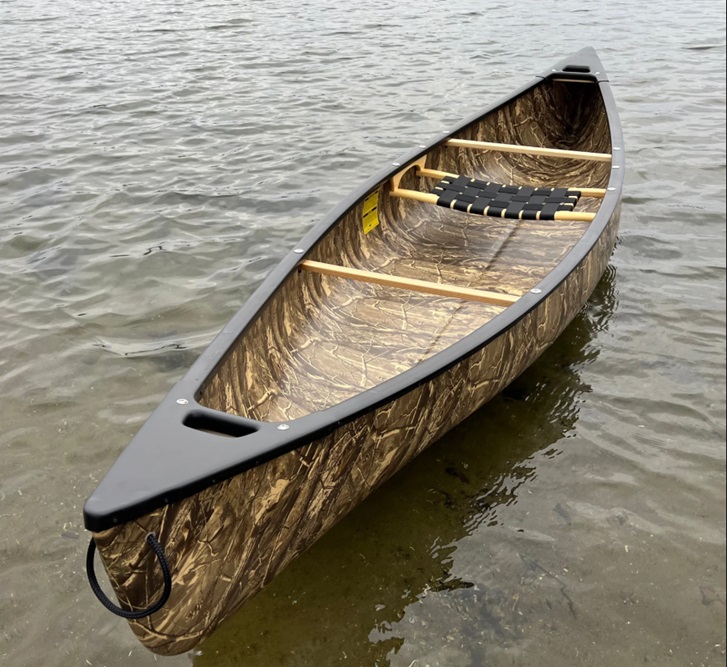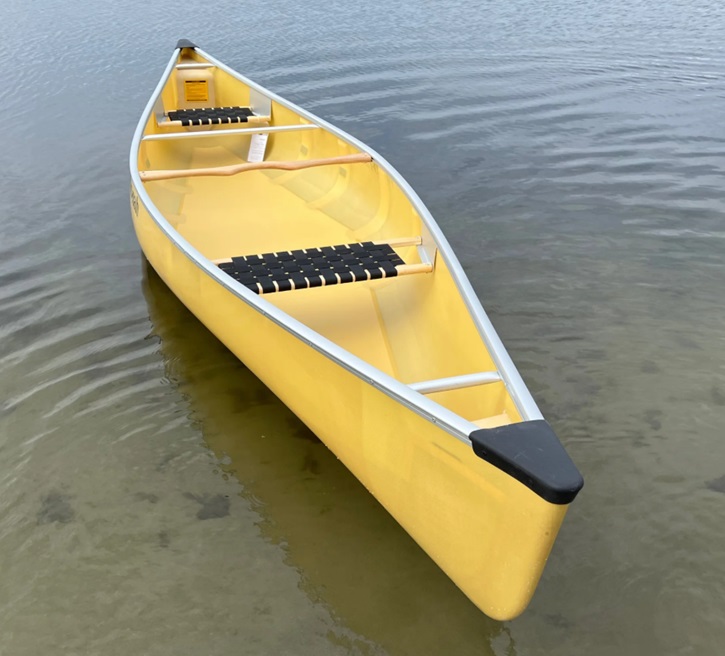


Canoeing is an incredible way to connect with nature and experience its beauty. It allows you to embrace adventure and find moments of peace amid a chaotic life.
But the kind of canoe you paddle can shape that experience in big ways.
Whether you're navigating solo through quiet waters or sharing the journey with a friend or a family member, choosing between a solo or tandem canoe is more than just about how many people are on board. It's about the style of your trips, your paddling goals, and how you want to engage with the outdoors.
This guide explores the strengths and trade-offs of both solo and tandem canoes and it also clears up a common misconception that choosing one means giving up the other. For many paddlers, especially those who've already spent time in a tandem, a solo canoe is an addition. A way to make their time on the water even more flexible, personal, and rewarding.
At first glance, they might seem like a niche choice, something for the lone-wolf paddler who enjoys total solitude. And while there's truth to that, the story goes deeper. These days, solo canoes have evolved far beyond their origins as compact alternatives to paddling a tandem canoe backward. Modern designs are longer, more stable, and fully capable of handling serious gear on multi-day wilderness trips.
In fact, many seasoned paddlers who already own a tandem add a solo to their setup for flexibility.
On group trips, having a solo canoe in the mix means you don’t need to cram three people into a boat like the Minnesota III. Instead, someone can break off and enjoy a solo session while others team up, great for fishing, photography, or just spreading out and avoiding elbow battles over paddle space.
Solo paddling is perfect for anyone who loves the idea of independence on the water. One of its biggest perks is the absolute freedom it gives you. You set your own pace, pick your route, and never have to worry about syncing up with a partner. It’s all about doing things your way.
One of its biggest perks is the absolute freedom it gives you. You set your own pace, pick your route, and never have to worry about syncing up with a partner. It’s all about doing things your way.
Another big win is the practicality of solo canoes. These are so lightweight and easy to carry that you can handle your gear without needing an extra set of hands. Plus, their compact design makes them super agile, allowing you to weave through winding rivers and narrow waterways like a pro.
But it’s not just about convenience. It is ideal for personal adventures like fishing, birdwatching, or simply soaking up the calmness of nature. Without any distractions, it’s just you, the paddle, and the serene embrace of the open water.
For all the freedom a solo canoe offers, it does come with a few trade-offs, especially if you’re heading out on longer trips or still getting your sea (er, lake) legs.
First off, paddling solo means, well, paddling solo. You’re the engine, navigator, and snack distributor all in one. Over time, especially on extended trips or into headwinds, that can wear you down (there’s no teammate to pick up the slack when your arms start questioning your life choices).
Then there’s the matter of space. While many modern solo canoes are impressively capable of carrying gear, some rival tandems in load capacity, you're still working with less overall room. If you’re the type to pack everything “just in case,” you might need to make a few tough calls when organizing your gear.
Handling also takes some adjustment. Some solo canoes are narrower and respond differently on the water than what you might be used to in a tandem. That agility is a gift once you’re dialed in, but for beginners, it can take a bit of practice to feel confident and balanced.
That said, most paddlers find the learning curve worth it. And for those adding a solo canoe to their existing fleet, it often becomes a favorite option (not just for quite escapes but also as a versatile tool for their group trips).
If you enjoy paddling with a friend, family member, or even your furry companion, a tandem vessel might be the better option. Built for two, these boats encourage teamwork and provide more space for gear, making them perfect for longer trips and recreational outings.
To begin with, it enables shared paddling effort. Two people paddling cover longer distances and require less effort per person.
Next, it offers greater stability. Tandem models tend to be wider, offering a steadier ride, especially for beginners.
Moreover, its greater storage capacity cannot be neglected. The extra space makes them ideal for carrying camping gear, food, and supplies on extended trips.
Last but not least, paddling with a partner can enhance the overall experience.
Tandem canoes bring a lot to the table, but they aren’t without challenges,  especially if you’re new to paddling or not exactly in sync with your canoe partner.
especially if you’re new to paddling or not exactly in sync with your canoe partner.
Coordinating strokes takes practice. Two paddlers means two rhythms, and without some communication, it’s easy to end up zigzagging instead of gliding forward. A few mismatched paddle strokes can make steering awkward or, depending on personalities, spark a debate about who’s ACTUALLY steering.
There’s also the matter of handling off the water. Tandem canoes tend to be longer and heavier, which makes them more cumbersome when loading onto a vehicle or portaging between lakes. If you're heading into terrain where you'll need to carry your gear and canoe more than once, that extra bulk can start to feel like a real factor.
On the water, their larger footprint means they don’t turn as sharply as a solo. In tight or technical waterways, narrow rivers, and sharp bends, maneuvering can be slower and requires more effort. It's not a deal breaker, but it's something to be aware of, especially if your trips take you through less open, more winding routes.
Still, for paddlers who value space, stability, and shared effort, a tandem is hard to beat. And with a little teamwork, the rhythm of paddling together starts to feel natural.
Deciding between a solo and tandem canoe isn’t always a matter of either-or. It’s more about understanding how you like to travel, who you go with, and the kind of water you are drawn to.
If you spend most of your time paddling with a friend or family member, or hauling gear for long trips, a tandem’s space and shared effort might make the most sense. On the other hand, if you sometimes head out alone or like the idea of having a more agile option in the mix, a solo canoe adds flexibility. Many experienced paddlers end up owning both, rotating between them depending on the day, the crew, or the water.
It also comes down to logistics.
How much gear do you typically bring?
Do you paddle on tight, twisting rivers or wide-open lakes?
Will you need to carry your canoe between lakes or load it solo?
Each of these questions nudges the decision in one direction or the other, and there’s no wrong answer.
Some paddlers even plan trips around both canoe types. One solo and one tandem can open up the route, letting a group split up for a bit or divide gear more evenly. It’s a setup that makes longer adventures smoother and gives everyone a chance to paddle how they like
At the end of the day, both solo and tandem models offer incredible ways to experience nature. A single-person craft gives you independence and agility, while a tandem allows for shared adventures and extra space for gear.
Whether you’re paddling through remote wilderness or calm scenic lakes, the right watercraft and quality gear can make all the difference. At Boundary Waters Catalog, we offer a wide selection of solo and tandem canoes and paddling essentials to help you get started on your next adventure.
So, while you are here, check out our canoes online or visit our store here in Ely, MN.